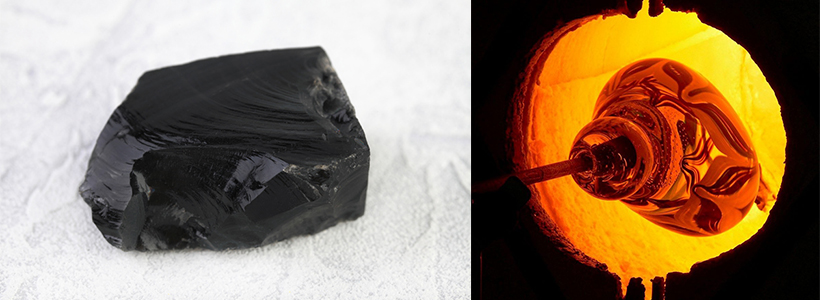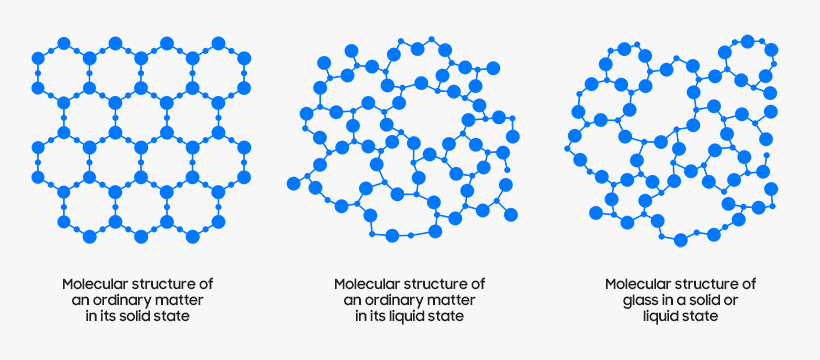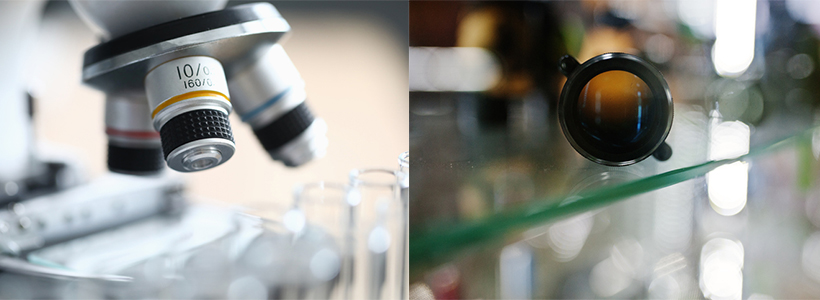
The UN designates a theme for each year to celebrate basic scientific advances in order to raise awareness of how even simple things contribute to the advancement of humanity. This year, they have decided, is the International Year of Glass. In fact, we see glass everywhere around us on a daily basis. From glass cups and windows to telescopes, optical fiber networks, and displays, glass is one of the most indispensable elements used in modern society. Glass not only plays a role in our daily life but also has a massive impact on the development of technologies.
Glass Throughout Human History
The history of humanity using glass dates back to the ancient Roman Empire. In fact, remainders of glass products were also found in the pyramids in Egypt. In today’s Iraq and Syria, glass beads are found that were supposedly made between 4000 B.C. and 5000 B.C. People in the Paleolithic Era used natural glass, such as obsidian and sulfate, as various tools. These materials were formed as the result of minerals melting and being solidified through natural events, such as volcanic activities and lightning. As history suggests, glass is one of the oldest materials due to be used throughout our history. From using blowing techniques in ancient times, we now have a wide array of production techniques for glass, such as the float glass process, expanding the areas of application.
* Float glass process: a sheet of flat glass made by floating molten glass on a bed of molten tin

In general, there are three states of matter: solids, liquids, or gases. While atoms or molecules in liquids and gases exist in an unruly manner, they form an ordered structure in a solid state. Glass is hard as any solid material, but at the same time, has an unstructured organization of atoms. Such structures are classified as “amorphous solids.”

As the disordered arrangement of molecules in glass does not change despite the changes in direction or position, and it involves no dispersion of light at fine boundaries, glass remains very transparent in the visible spectrum unless there is an absorption wavelength band. Glass also has mechanical strength of solids. This is the reason why glass usage varies from storage containers to construction materials, optical equipment, optical communication, and art.
* Absorption wavelength band: The wavelength band in the electromagnetic radiation spectrum absorbed by a particular matter
Innovation in Science and Technology Enabled by Glass
Over the course of thousands of years, glass has evolved to become more transparent and stronger with the goal of mass production. Throughout this process, glass has played a critical role in the advancement of science and technology.

A prime example is optical equipment, such as microscopes and telescopes, which was invented in the early days of the modern period. Consisting of lenses of various shapes being combined together, these inventions would not have been possible without the existence of clear glass. The microscope, which allowed us to zoom in on items invisible to the naked eye, pioneered the first move towards the invisible world. The telescope, through which Galileo observed the night sky, offered a new perspective to see the universe. The development of science would not have been possible without such optical equipment made of glass.
Even the technological innovation of today would not be possible without glass. One of the most important examples is the optical communication networks that connect different parts of the world and transmit a tremendous amount of information in real-time. The development of high-purity glass optical fibers enabled the construction of communication networks that could transmit a tremendous amount of information at a much higher speed compared to sending the same information via copper wires.

It’s been about 100 years since we could create string-thin glass, but using such thin strands of glass for information transmission required minimizing the content of impurities. It was only after the successful analysis of the mechanism of light loss in glass by physicist Sir Charles Kuen Kao (the winner of the Nobel Prize in Physics in 2009) and the subsequent development of highly-pure quartz glass that the information superhighway could become a reality.
What Does Glass Do In Displays?
Displays are another crucial technology in information transmission. Communicating information in a visual form, displays are used in devices that are essential in our daily lives. Production of displays requires glass substrates. Substrates must be transparent and heat-resistant, and their flatness, an indicator of the consistency in their thickness, is important. What achieves the required level of flatness for display substrates is none other than glass. A glass substrate forms the foundation of a display and houses various components, such as the thin-film transistor, color filter, and polarizer.

Glass used in a display is not only used for flat surfaces but also in curved forms, like those found in curved monitors. In foldable displays that have been recently introduced to the market, super-thin tempered glass called ultra-thin glass (UTG) was used as the cover window.
When glass is processed as thin as micrometers (㎛), the level of stress applied to the atoms in the outer layer is reduced, increasing the curvature for the glass. A foldable display equipped with ultra-thin glass is so thin and flexible that it has the resistance and strength to withstand being folded hundreds of thousands of times.

Ordinary windows or glass containers used in households may not be immediately associated with glass being folded multiple times. But the tempered glass used in the glass stepping stones in the global sensation Squid Game suggests that glass can be treated in a special process to be made extremely strong.
When exposed to pressure, ordinary glass is pressed downwards, bending where the pressure is greatest. If the outer layer, which is stretched the most, exceeds the threshold that the glass can withstand, it will break. Tempered glass is a type of glass that has been treated through a process of cooling down heated glass from both sides so that the outer layer contracts compared to the interior. The contracted surface on both sides will wrap the expanded interior around so that the glass can have increased resistance to shock. Tempered glass can also be made by replacing certain ions on the glass’ surface.

From its manufacturing process dating back to ancient times to the modern information and communication technologies such as optical fibers, glass has evolved, along with its roles, to become indispensable in our lives. It even finds use in the renewable energy and aviation sectors, and without it augmented reality would have remained in the realm of sci-fi. The development of human civilization goes hand-in-hand with the development of glass.

School of Nano Convergence at Hallym University
※ This article holds the editor’s opinion, and Samsung Display Newsroom’s stance or strategies are not reflected.

